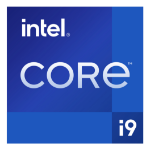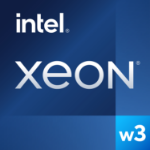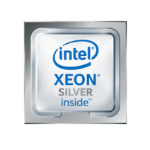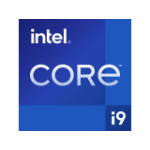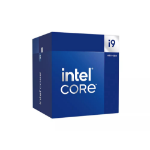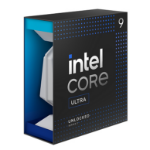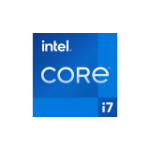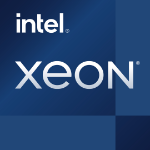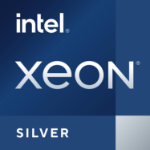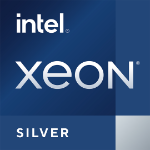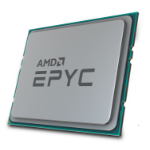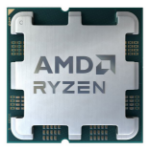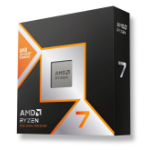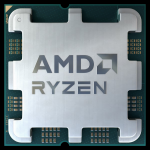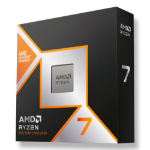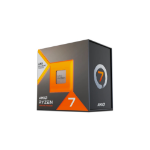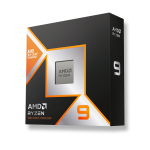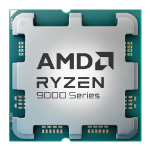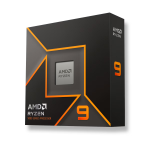AMD Ryzen 9 7900 processor 3.7 GHz 64 MB L3
£420.04
£350.03
AM5, 12 cores, 24 threads, 3.7 GHz base clock, 5.4 GHz boost clock, 64 MB cache, 65 W
More Information
| Processor socket | Socket AM5 |
|---|---|
| Box | No |
| Processor cores | 12 |
| Processor family | AMD Ryzen 9 |
| SKU | 100-100000590MPK |
| EAN | 0730143314473 |
| Manufacturer | AMD |
| Availability | Y |
| Product Family | Ryzen |
| Product Series | 9 |
Description
Serious Performance for Gamers and Creators
Enjoy serious speed and the ultimate power efficiency for gaming and creating. This processor comes fully unlocked, overclockable, and will remain cool and quiet with an included AMD Wraith Prism cooler with RGB LED lighting.
Enjoy serious speed and the ultimate power efficiency for gaming and creating. This processor comes fully unlocked, overclockable, and will remain cool and quiet with an included AMD Wraith Prism cooler with RGB LED lighting.
Specifications
| Processor | |
|---|---|
| Processor generation | AMD Ryzen 7000 Series |
| Processor base frequency | 3.7 GHz |
| Processor manufacturer | AMD |
| Cooler included | Yes |
| Thermal Design Power (TDP) | 65 W |
| Processor cache | 64 MB |
| Processor model | 7900 |
| Processor threads | 24 |
| Processor operating modes | 64-bit |
| L1 cache | 0.768 MB |
| Processor boost frequency | 5.4 GHz |
| Processor lithography | 5 nm |
| Processor family | AMD Ryzen™ 9 |
| Processor cores | 12 |
| Box | No |
| Processor socket | Socket AM5 |
| Processor cache type | L3 |
| Memory | |
| Maximum internal memory supported by processor | 128 GB |
| Memory types supported by processor | DDR5-SDRAM |
| Memory clock speeds supported by processor | 3600,5200 MHz |
| Memory channels | Dual-channel |
| Graphics | |
| Discrete graphics card | No |
| On-board graphics card model | AMD Radeon Graphics |
| On-board graphics card | Yes |
| On-board graphics card base frequency | 2200 MHz |
| Discrete graphics card model | Not available |
| Power | |
| Thermal Design Power (TDP) | 65 W |
| Technical details | |
|---|---|
| L2 cache | 12288 KB |
| Compatible operating systems | Windows 11/10 64-bit, RHEL x86 64-bit, Ubuntu x86 64-bit |
| Thermal Design Power (TDP) | 65 W |
| Market segment | Desktop |
| Launch date | 1/14/2023 |
| Processor cache type | L3 |
| Features | |
| Thermal Design Power (TDP) | 65 W |
| Compatible operating systems | Windows 11/10 64-bit, RHEL x86 64-bit, Ubuntu x86 64-bit |
| Market segment | Desktop |
| Operational conditions | |
| Tjunction | 95 °C |
| Other features | |
| L1 cache | 0.768 MB |
| L2 cache | 12288 KB |
Delivery Details
- UK distributors.
- Order before 4 pm for next-day delivery.
- Standard (2-3 days) £7.50
- Next Day £9.99
- Free standard delivery over £100
There are deivery surcharges to these postcodes:
| Postcode | Charge |
| IV3-40 | £20 |
| IV52-54 | £20 |
| IV63 | £20 |
| KW1-14 | £20 |
| PA10-40 | £20 |
| PH19-40 | £20 |
| PH50 | £20 |
| HS | £50 |
| IV41-51 | £50 |
| IV55-56 | £50 |
| KA27-28 | £50 |
| KW15-17 | £50 |
| PA41-49 | £50 |
| PA60-62 | £50 |
| PA76-78 | £50 |
| PH41-44 | £50 |
| ZE | £50 |
| IM | £50 |
| JE | £50 |
| GY | £50 |
| TR21-25 | £50 |
| BT | £20 |
Suggested Products
Intel Core i9-12900KS processor 30 MB Smart Cache ...
Shop NowIntel Xeon w3-2425 processor 3 GHz 15 MB Smart Cac...
Shop NowHPE Intel Xeon-Silver 4214R processor 2.4 GHz 16.5...
Shop NowIntel Core i9-13900KF processor 36 MB Smart Cache
Shop NowIntel Core i9-14900F processor 36 MB Smart Cache B...
Shop NowIntel Core Ultra 9 285 processor 36 MB Smart Cache...
Shop NowHPE Intel Xeon-Silver 4214R processor 2.4 GHz 16.5...
Shop NowIntel Core i9-14900 processor 36 MB Smart Cache Bo...
Shop NowIntel Core i7-11700T processor 1.4 GHz 16 MB Smart...
Shop NowIntel Xeon E-2356G processor 3.2 GHz 12 MB Smart C...
Shop NowIntel Xeon E-2374G processor 3.7 GHz 8 MB Smart Ca...
Shop NowIntel Xeon E-2386G processor 3.5 GHz 12 MB Smart C...
Shop NowIntel Xeon Silver 4309Y processor 2.8 GHz 12 MB
Shop NowAMD EPYC 7313 processor 3 GHz 128 MB L3
Shop NowIntel Core i9-10900X processor 3.7 GHz 19.25 MB Sm...
Shop NowIntel Xeon Silver 4510 processor 2.4 GHz 30 MB
Shop NowAMD EPYC 4584PX processor 4.2 GHz 128 MB L3
Shop NowIntel Xeon W-2225 processor 4.1 GHz 8.25 MB
Shop NowIntel Core i7-13700K processor 30 MB Smart Cache B...
Shop NowIntel Xeon W-2223 processor 3.6 GHz 8.25 MB
Shop NowIntel Core Ultra 9 285K processor 36 MB Smart Cach...
Shop NowIntel Core i9-14900KF processor 36 MB Smart Cache ...
Shop NowAMD Ryzen 5 7600X3D processor 4.1 GHz 96 MB L3
Shop NowAMD Ryzen 7 9800X3D processor 4.7 GHz 96 MB L3
Shop NowAMD Ryzen 7 7700 processor 3.8 GHz 32 MB L3
Shop NowAMD Ryzen 7 7700X processor 4.5 GHz 32 MB L3
Shop NowAMD Ryzen 7 9800X3D processor 4.7 GHz 104 MB L2 & ...
Shop NowAMD Ryzen 7 7800X3D processor 4.2 GHz 96 MB L3 Box
Shop NowAMD Ryzen 9 7900X3D processor 4.4 GHz 128 MB L3
Shop NowAMD Ryzen 9 7900X processor 4.7 GHz 64 MB L3
Shop NowAMD Ryzen 9 9900X3D processor 4.4 GHz 140 MB L2 & ...
Shop NowAMD Ryzen 9 9900X processor 4.4 GHz 76 MB L2 & L3
Shop NowAMD Ryzen 9 9900X3D processor 4.4 GHz 140 MB L2 & ...
Shop NowAMD Ryzen 9 9950X processor 4.3 GHz 80 MB L2 & L3 ...
Shop NowAMD Ryzen 9 7950X processor 4.5 GHz 64 MB L3 Box
Shop NowAMD Ryzen 9 9900X processor 4.4 GHz 76 MB L2 & L3 ...
Shop NowYou may also be interested in
| Product |
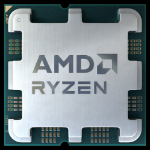
Hot Product
AMD Ryzen 9 7900 processor 3.7 GHz 64...
£420.04
£350.03
|
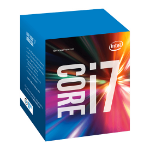
New
Intel Core i7-6700 processor 3.4 GHz 8...
£354.71
£295.59
|
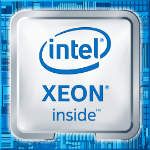
Popular
Intel Xeon W-2225 processor 4.1 GHz 8....
£482.64
£402.20
|
 Intel Xeon W-2223 processor 3.6 GHz 8....
Intel Xeon W-2223 processor 3.6 GHz 8....
£352.43
£293.69
|
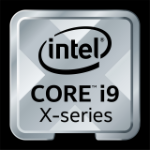
Recommended
Intel Core i9-10900X processor 3.7 GHz...
£606.00
£505.00
|

Bestseller
AMD EPYC 7313 processor 3 GHz 128 MB L3
£501.95
£418.29
|
|---|---|---|---|---|---|---|
| SKU |
100-100000590MPK
|
CM8066201920103
|
CD8069504394102
|
CD8069504394701
|
CD8069504382100
|
100-000000329
|
| Description |
Serious Performance for Gamers and Creators
Enjoy serious speed and the ultimate power efficiency for gaming and creating. This processor comes fully unlocked, overclockable, and will remain cool and quiet with an included AMD Wraith Prism cooler with RGB LED lighting. |
The 6th generation Intel® Core™ i7 processors deliver a new class of computing with a host of new features to power the next generation of laptops and 2 in 1 PCs. Expect lighting fast speeds and peak performance through even the toughest of tasks and games. The built-in revolutionary Intel® Hyper-Threading Technology allows each processor core to work on two tasks at the same time for smoother multitasking while Intel® Iris™ graphics delivers stunning 3D visuals and faster, more advanced video and photo editing. Game the way you want and push the boundaries with overclocking for your most demanding gaming needs. The ultimate in peak performance.
Ready. Wake. Create. From zero to power in a flash, the 6th generation Intel® Core™ processor wakes quicker than ever and lets you switch in and out of apps more seamlessly than ever. Stunning Visual Experiences With 6th generation Intel® Core™ processor Ultra HD graphics, your screen comes to life. Watch in a whole new way with 4k screens. Wireless displays let you create and game anywhere. Security You Can Trust Worry-free and hassle-free security is yours. With facial recognition and True Key™ technology, getting you logged in and protected has never been easier or more secure. |
Intel® Trusted Execution Technology
Intel® Trusted Execution Technology for safer computing is a versatile set of hardware extensions to Intel® processors and chipsets that enhance the digital office platform with security capabilities such as measured launch and protected execution. It enables an environment where applications can run within their own space, protected from all other software on the system. Intel® Virtualization Technology for Directed I/O (VT-d) Intel® Virtualization Technology for Directed I/O (VT-d) continues from the existing support for IA-32 (VT-x) and Itanium® processor (VT-i) virtualization adding new support for I/O-device virtualization. Intel VT-d can help end users improve security and reliability of the systems and also improve performance of I/O devices in virtualized environments. Intel® Virtualization Technology (VT-x) Intel® Virtualization Technology (VT-x) allows one hardware platform to function as multiple “virtual” platforms. It offers improved manageability by limiting downtime and maintaining productivity by isolating computing activities into separate partitions. Intel® 64 Intel® 64 architecture delivers 64-bit computing on server, workstation, desktop and mobile platforms when combined with supporting software.¹ Intel 64 architecture improves performance by allowing systems to address more than 4 GB of both virtual and physical memory. Cache CPU Cache is an area of fast memory located on the processor. Intel® Smart Cache refers to the architecture that allows all cores to dynamically share access to the last level cache. Intel® AES New Instructions Intel® AES New Instructions (Intel® AES-NI) are a set of instructions that enable fast and secure data encryption and decryption. AES-NI are valuable for a wide range of cryptographic applications, for example: applications that perform bulk encryption/decryption, authentication, random number generation, and authenticated encryption. Idle States Idle States (C-states) are used to save power when the processor is idle. C0 is the operational state, meaning that the CPU is doing useful work. C1 is the first idle state, C2 the second, and so on, where more power saving actions are taken for numerically higher C-states. Intel® Turbo Boost Technology Intel® Turbo Boost Technology dynamically increases the processor's frequency as needed by taking advantage of thermal and power headroom to give you a burst of speed when you need it, and increased energy efficiency when you don’t. Max Turbo Frequency Max Turbo Frequency is the maximum single-core frequency at which the processor is capable of operating using Intel® Turbo Boost Technology and, if present, Intel® Turbo Boost Max Technology 3.0 and Intel® Thermal Velocity Boost. Frequency is typically measured in gigahertz (GHz), or billion cycles per second. Execute Disable Bit Execute Disable Bit is a hardware-based security feature that can reduce exposure to viruses and malicious-code attacks and prevent harmful software from executing and propagating on the server or network. Intel® Hyper-Threading Technology Intel® Hyper-Threading Technology (Intel® HT Technology) delivers two processing threads per physical core. Highly threaded applications can get more work done in parallel, completing tasks sooner. Instruction Set An instruction set refers to the basic set of commands and instructions that a microprocessor understands and can carry out. The value shown represents which Intel’s instruction set this processor is compatible with. Intel vPro® Platform Eligibility The Intel vPro® platform is a set of hardware and technologies used to build business computing endpoints with premium performance, built-in security, modern manageability and platform stability. Intel® VT-x with Extended Page Tables (EPT) Intel® VT-x with Extended Page Tables (EPT), also known as Second Level Address Translation (SLAT), provides acceleration for memory intensive virtualized applications. Extended Page Tables in Intel® Virtualization Technology platforms reduces the memory and power overhead costs and increases battery life through hardware optimization of page table management. Intel® Optane™ Memory Supported Intel® Optane™ memory is a revolutionary new class of non-volatile memory that sits in between system memory and storage to accelerate system performance and responsiveness. When combined with the Intel® Rapid Storage Technology Driver, it seamlessly manages multiple tiers of storage while presenting one virtual drive to the OS, ensuring that data frequently used resides on the fastest tier of storage. Intel® Optane™ memory requires specific hardware and software configuration. Enhanced Intel SpeedStep® Technology Enhanced Intel SpeedStep® Technology is an advanced means of enabling high performance while meeting the power-conservation needs of mobile systems. Conventional Intel SpeedStep® Technology switches both voltage and frequency in tandem between high and low levels in response to processor load. Enhanced Intel SpeedStep® Technology builds upon that architecture using design strategies such as Separation between Voltage and Frequency Changes, and Clock Partitioning and Recovery. Intel® Demand Based Switching Intel® Demand Based Switching is a power-management technology in which the applied voltage and clock speed of a microprocessor are kept at the minimum necessary levels until more processing power is required. This technology was introduced as Intel SpeedStep® Technology in the server marketplace. Intel® Flex Memory Access Intel® Flex Memory Access facilitates easier upgrades by allowing different memory sizes to be populated and remain in dual-channel mode. Secure Key Intel® Secure Key consists of a digital random number generator that creates truly random numbers to strengthen encryption algorithms. Intel® Speed Shift Technology Intel® Speed Shift Technology uses hardware-controlled P-states to deliver dramatically quicker responsiveness with single-threaded, transient (short duration) workloads, such as web browsing, by allowing the processor to more quickly select its best operating frequency and voltage for optimal performance and power efficiency. Intel® Software Guard Extensions (Intel® SGX) Intel® Software Guard Extensions (Intel® SGX) provide applications the ability to create hardware enforced trusted execution protection for their applications’ sensitive routines and data. Intel® SGX provides developers a way to partition their code and data into CPU hardened trusted execution environments (TEE’s). Intel® Deep Learning Boost (Intel® DL Boost) on CPU A new set of embedded processor technologies designed to accelerate AI deep learning use cases. It extends Intel AVX-512 with a new Vector Neural Network Instruction (VNNI) that significantly increases deep learning inference performance over previous generations. Instruction Set Extensions Instruction Set Extensions are additional instructions which can increase performance when the same operations are performed on multiple data objects. These can include SSE (Streaming SIMD Extensions) and AVX (Advanced Vector Extensions). Intel® Turbo Boost Max Technology 3.0 Intel® Turbo Boost Max Technology 3.0 identifies the best performing core(s) on a processor and provides increased performance on those cores through increasing frequency as needed by taking advantage of power and thermal headroom. Max # of UPI Links Intel® Ultra Path Interconnect (UPI) links are a high speed, point-to-point interconnect bus between the processors, delivering increased bandwidth and performance over Intel® QPI. # of AVX-512 FMA Units Intel® Advanced Vector Extensions 512 (AVX-512), new instruction set extensions, delivering ultra-wide (512-bit) vector operations capabilities, with up to 2 FMAs (Fused Multiply Add instructions), to accelerate performance for your most demanding computational tasks. Thermal Monitoring Technologies Thermal Monitoring Technologies protect the processor package and the system from thermal failure through several thermal management features. An on-die Digital Thermal Sensor (DTS) detects the core's temperature, and the thermal management features reduce package power consumption and thereby temperature when required in order to remain within normal operating limits. Intel® Identity Protection Technology Intel® Identity Protection Technology is a built-in security token technology that helps provide a simple, tamper-resistant method for protecting access to your online customer and business data from threats and fraud. Intel® IPT provides a hardware-based proof of a unique user’s PC to websites, financial institutions, and network services; providing verification that it is not malware attempting to login. Intel® IPT can be a key component in two-factor authentication solutions to protect your information at websites and business log-ins. Intel® Volume Management Device (VMD) Intel® Volume Management Device (VMD) provides a common, robust method of hot plug and LED management for NVMe-based solid state drives. Intel® Memory Protection Extensions (Intel® MPX) Intel® Memory Protection Extensions (Intel® MPX) provides a set of hardware features that can be used by software in conjunction with compiler changes to check that memory references intended at compile time do not become unsafe at runtime due to buffer overflow or underflow. Intel® Boot Guard Intel® Device Protection Technology with Boot Guard helps protect the system’s pre-OS environment from viruses and malicious software attacks. Intel® Transactional Synchronization Extensions Intel® Transactional Synchronization Extensions (Intel® TSX) are a set of instructions that add hardware transactional memory support to improve performance of multi-threaded software. |
Intel® Trusted Execution Technology
Intel® Trusted Execution Technology for safer computing is a versatile set of hardware extensions to Intel® processors and chipsets that enhance the digital office platform with security capabilities such as measured launch and protected execution. It enables an environment where applications can run within their own space, protected from all other software on the system. Intel® Virtualization Technology for Directed I/O (VT-d) Intel® Virtualization Technology for Directed I/O (VT-d) continues from the existing support for IA-32 (VT-x) and Itanium® processor (VT-i) virtualization adding new support for I/O-device virtualization. Intel VT-d can help end users improve security and reliability of the systems and also improve performance of I/O devices in virtualized environments. Intel® Virtualization Technology (VT-x) Intel® Virtualization Technology (VT-x) allows one hardware platform to function as multiple “virtual” platforms. It offers improved manageability by limiting downtime and maintaining productivity by isolating computing activities into separate partitions. Intel® 64 Intel® 64 architecture delivers 64-bit computing on server, workstation, desktop and mobile platforms when combined with supporting software.¹ Intel 64 architecture improves performance by allowing systems to address more than 4 GB of both virtual and physical memory. Cache CPU Cache is an area of fast memory located on the processor. Intel® Smart Cache refers to the architecture that allows all cores to dynamically share access to the last level cache. Intel® AES New Instructions Intel® AES New Instructions (Intel® AES-NI) are a set of instructions that enable fast and secure data encryption and decryption. AES-NI are valuable for a wide range of cryptographic applications, for example: applications that perform bulk encryption/decryption, authentication, random number generation, and authenticated encryption. Idle States Idle States (C-states) are used to save power when the processor is idle. C0 is the operational state, meaning that the CPU is doing useful work. C1 is the first idle state, C2 the second, and so on, where more power saving actions are taken for numerically higher C-states. Intel® Turbo Boost Technology Intel® Turbo Boost Technology dynamically increases the processor's frequency as needed by taking advantage of thermal and power headroom to give you a burst of speed when you need it, and increased energy efficiency when you don’t. Max Turbo Frequency Max Turbo Frequency is the maximum single-core frequency at which the processor is capable of operating using Intel® Turbo Boost Technology and, if present, Intel® Turbo Boost Max Technology 3.0 and Intel® Thermal Velocity Boost. Frequency is typically measured in gigahertz (GHz), or billion cycles per second. Execute Disable Bit Execute Disable Bit is a hardware-based security feature that can reduce exposure to viruses and malicious-code attacks and prevent harmful software from executing and propagating on the server or network. Intel® Hyper-Threading Technology Intel® Hyper-Threading Technology (Intel® HT Technology) delivers two processing threads per physical core. Highly threaded applications can get more work done in parallel, completing tasks sooner. Instruction Set An instruction set refers to the basic set of commands and instructions that a microprocessor understands and can carry out. The value shown represents which Intel’s instruction set this processor is compatible with. Intel vPro® Platform Eligibility The Intel vPro® platform is a set of hardware and technologies used to build business computing endpoints with premium performance, built-in security, modern manageability and platform stability. Intel® VT-x with Extended Page Tables (EPT) Intel® VT-x with Extended Page Tables (EPT), also known as Second Level Address Translation (SLAT), provides acceleration for memory intensive virtualized applications. Extended Page Tables in Intel® Virtualization Technology platforms reduces the memory and power overhead costs and increases battery life through hardware optimization of page table management. Intel® Optane™ Memory Supported Intel® Optane™ memory is a revolutionary new class of non-volatile memory that sits in between system memory and storage to accelerate system performance and responsiveness. When combined with the Intel® Rapid Storage Technology Driver, it seamlessly manages multiple tiers of storage while presenting one virtual drive to the OS, ensuring that data frequently used resides on the fastest tier of storage. Intel® Optane™ memory requires specific hardware and software configuration. Enhanced Intel SpeedStep® Technology Enhanced Intel SpeedStep® Technology is an advanced means of enabling high performance while meeting the power-conservation needs of mobile systems. Conventional Intel SpeedStep® Technology switches both voltage and frequency in tandem between high and low levels in response to processor load. Enhanced Intel SpeedStep® Technology builds upon that architecture using design strategies such as Separation between Voltage and Frequency Changes, and Clock Partitioning and Recovery. Intel® Demand Based Switching Intel® Demand Based Switching is a power-management technology in which the applied voltage and clock speed of a microprocessor are kept at the minimum necessary levels until more processing power is required. This technology was introduced as Intel SpeedStep® Technology in the server marketplace. Secure Key Intel® Secure Key consists of a digital random number generator that creates truly random numbers to strengthen encryption algorithms. Intel® Speed Shift Technology Intel® Speed Shift Technology uses hardware-controlled P-states to deliver dramatically quicker responsiveness with single-threaded, transient (short duration) workloads, such as web browsing, by allowing the processor to more quickly select its best operating frequency and voltage for optimal performance and power efficiency. Intel® Software Guard Extensions (Intel® SGX) Intel® Software Guard Extensions (Intel® SGX) provide applications the ability to create hardware enforced trusted execution protection for their applications’ sensitive routines and data. Intel® SGX provides developers a way to partition their code and data into CPU hardened trusted execution environments (TEE’s). Intel® Deep Learning Boost (Intel® DL Boost) on CPU A new set of embedded processor technologies designed to accelerate AI deep learning use cases. It extends Intel AVX-512 with a new Vector Neural Network Instruction (VNNI) that significantly increases deep learning inference performance over previous generations. Instruction Set Extensions Instruction Set Extensions are additional instructions which can increase performance when the same operations are performed on multiple data objects. These can include SSE (Streaming SIMD Extensions) and AVX (Advanced Vector Extensions). Intel® Turbo Boost Max Technology 3.0 Intel® Turbo Boost Max Technology 3.0 identifies the best performing core(s) on a processor and provides increased performance on those cores through increasing frequency as needed by taking advantage of power and thermal headroom. Max # of UPI Links Intel® Ultra Path Interconnect (UPI) links are a high speed, point-to-point interconnect bus between the processors, delivering increased bandwidth and performance over Intel® QPI. # of AVX-512 FMA Units Intel® Advanced Vector Extensions 512 (AVX-512), new instruction set extensions, delivering ultra-wide (512-bit) vector operations capabilities, with up to 2 FMAs (Fused Multiply Add instructions), to accelerate performance for your most demanding computational tasks. Thermal Monitoring Technologies Thermal Monitoring Technologies protect the processor package and the system from thermal failure through several thermal management features. An on-die Digital Thermal Sensor (DTS) detects the core's temperature, and the thermal management features reduce package power consumption and thereby temperature when required in order to remain within normal operating limits. Intel® Identity Protection Technology Intel® Identity Protection Technology is a built-in security token technology that helps provide a simple, tamper-resistant method for protecting access to your online customer and business data from threats and fraud. Intel® IPT provides a hardware-based proof of a unique user’s PC to websites, financial institutions, and network services; providing verification that it is not malware attempting to login. Intel® IPT can be a key component in two-factor authentication solutions to protect your information at websites and business log-ins. Intel® Volume Management Device (VMD) Intel® Volume Management Device (VMD) provides a common, robust method of hot plug and LED management for NVMe-based solid state drives. Intel® Memory Protection Extensions (Intel® MPX) Intel® Memory Protection Extensions (Intel® MPX) provides a set of hardware features that can be used by software in conjunction with compiler changes to check that memory references intended at compile time do not become unsafe at runtime due to buffer overflow or underflow. Intel® Boot Guard Intel® Device Protection Technology with Boot Guard helps protect the system’s pre-OS environment from viruses and malicious software attacks. Intel® Transactional Synchronization Extensions Intel® Transactional Synchronization Extensions (Intel® TSX) are a set of instructions that add hardware transactional memory support to improve performance of multi-threaded software. |
Intel® Virtualization Technology for Directed I/O (VT-d)
Intel® Virtualization Technology for Directed I/O (VT-d) continues from the existing support for IA-32 (VT-x) and Itanium® processor (VT-i) virtualization adding new support for I/O-device virtualization. Intel VT-d can help end users improve security and reliability of the systems and also improve performance of I/O devices in virtualized environments. Intel® Virtualization Technology (VT-x) Intel® Virtualization Technology (VT-x) allows one hardware platform to function as multiple “virtual” platforms. It offers improved manageability by limiting downtime and maintaining productivity by isolating computing activities into separate partitions. Intel® 64 Intel® 64 architecture delivers 64-bit computing on server, workstation, desktop and mobile platforms when combined with supporting software.¹ Intel 64 architecture improves performance by allowing systems to address more than 4 GB of both virtual and physical memory. Cache CPU Cache is an area of fast memory located on the processor. Intel® Smart Cache refers to the architecture that allows all cores to dynamically share access to the last level cache. Intel® AES New Instructions Intel® AES New Instructions (Intel® AES-NI) are a set of instructions that enable fast and secure data encryption and decryption. AES-NI are valuable for a wide range of cryptographic applications, for example: applications that perform bulk encryption/decryption, authentication, random number generation, and authenticated encryption. Intel® Turbo Boost Technology Intel® Turbo Boost Technology dynamically increases the processor's frequency as needed by taking advantage of thermal and power headroom to give you a burst of speed when you need it, and increased energy efficiency when you don’t. Max Turbo Frequency Max Turbo Frequency is the maximum single-core frequency at which the processor is capable of operating using Intel® Turbo Boost Technology and, if present, Intel® Turbo Boost Max Technology 3.0 and Intel® Thermal Velocity Boost. Frequency is typically measured in gigahertz (GHz), or billion cycles per second. Execute Disable Bit Execute Disable Bit is a hardware-based security feature that can reduce exposure to viruses and malicious-code attacks and prevent harmful software from executing and propagating on the server or network. Intel® Hyper-Threading Technology Intel® Hyper-Threading Technology (Intel® HT Technology) delivers two processing threads per physical core. Highly threaded applications can get more work done in parallel, completing tasks sooner. Intel® Optane™ Memory Supported Intel® Optane™ memory is a revolutionary new class of non-volatile memory that sits in between system memory and storage to accelerate system performance and responsiveness. When combined with the Intel® Rapid Storage Technology Driver, it seamlessly manages multiple tiers of storage while presenting one virtual drive to the OS, ensuring that data frequently used resides on the fastest tier of storage. Intel® Optane™ memory requires specific hardware and software configuration. Enhanced Intel SpeedStep® Technology Enhanced Intel SpeedStep® Technology is an advanced means of enabling high performance while meeting the power-conservation needs of mobile systems. Conventional Intel SpeedStep® Technology switches both voltage and frequency in tandem between high and low levels in response to processor load. Enhanced Intel SpeedStep® Technology builds upon that architecture using design strategies such as Separation between Voltage and Frequency Changes, and Clock Partitioning and Recovery. Intel® Deep Learning Boost (Intel® DL Boost) on CPU A new set of embedded processor technologies designed to accelerate AI deep learning use cases. It extends Intel AVX-512 with a new Vector Neural Network Instruction (VNNI) that significantly increases deep learning inference performance over previous generations. Instruction Set Extensions Instruction Set Extensions are additional instructions which can increase performance when the same operations are performed on multiple data objects. These can include SSE (Streaming SIMD Extensions) and AVX (Advanced Vector Extensions). Intel® Turbo Boost Max Technology 3.0 Frequency Intel® Turbo Boost Max Technology 3.0 identifies the best performing core(s) on a processor and provides increased performance on those cores through increasing frequency as needed by taking advantage of power and thermal headroom. Intel® Turbo Boost Max Technology 3.0 frequency is the clock frequency of the CPU when running in this mode. Intel® Turbo Boost Max Technology 3.0 Intel® Turbo Boost Max Technology 3.0 identifies the best performing core(s) on a processor and provides increased performance on those cores through increasing frequency as needed by taking advantage of power and thermal headroom. # of AVX-512 FMA Units Intel® Advanced Vector Extensions 512 (AVX-512), new instruction set extensions, delivering ultra-wide (512-bit) vector operations capabilities, with up to 2 FMAs (Fused Multiply Add instructions), to accelerate performance for your most demanding computational tasks. |
Accelerate Workload Performance
Data centers that require the best CPU performance, security features, and scalability count on Solution Briefs and White Papers Find the technical resources you need to learn more about AMD EPYC™. Where to Buy EPYC™️ Powered Solutions Find a partner offering AMD EPYC™ Processors and solutions. AMD Data Center Insights and Updates Sign up to receive the latest data center news and server content. AMD Infinity Guard Help minimize potential attack surfaces as software is booted, executed, and processes your critical data AMD Infinity Architecture With architecture, performance, and security leadership, our approach to processor design accelerates the pace of innovation so that you can break through years of data center stagnation. |
| Short Description |
AM5, 12 cores, 24 threads, 3.7 GHz base clock, 5.4 GHz boost clock, 64 MB cache, 65 W
|
Intel® Core™ i7-6700 Processor
(8M Cache, up to 4.00 GHz) |
Intel® Xeon® W-2225 Processor (8.25M Cache, 4.10 GHz)
|
Intel® Xeon® W-2223 Processor (8.25M Cache, 3.60 GHz)
|
Intel® Core™ i9-10900X X-series Processor (19.25M Cache, 3.70 GHz)
|
16 cores, 32 threads, 3GHz base clock, 3.7GHz boost clock, 128MB L3 cache, 155W TDP
|
| Manufacturer |
AMD
|
Intel
|
Intel
|
Intel
|
Intel
|
AMD
|




